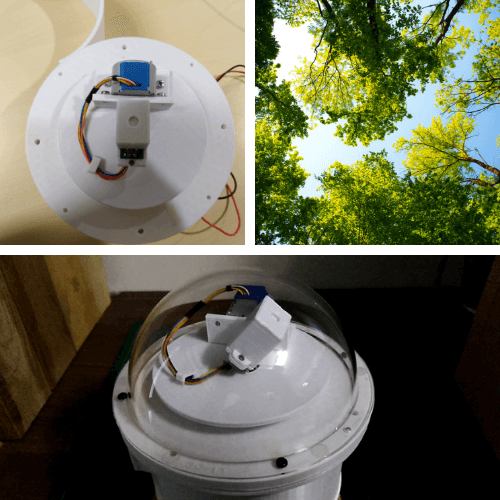Canopy spectral sensor

Light interception efficiency is a major factor influencing plant development and biomass production. Light interception in an orchard canopy is a key parameter driving yield and quality of the production. Plant and fruit growth and development is significantly influenced by both the quantity and the quality of the light intercepted by the canopy.
Light that drives photosynthesis is called Photosynthetically Active Radiation (PAR) and is typically defined as total light with wavelength in the range 400-700 nm. Conventional PAR sensors provide a single value of light irradiance in that range.
We developed and engineered a canopy spectral sensor based on a spectrometer that can capture the entire light spectrum from 350 to 850 nm with a resolution of better than 10 nm. The system is mounted on a moving platform that is able to rotate about two axes. The system enables the measurement of the sunlight distributions as a function of the elevation and azimuth in terms of both its intensity and its spectrum.
We engineered the readout system of the spectrometer to be able to measure any light level, from very low levels such as those of dusk or dawn, to extremely bright conditions such as those when the sensor is pointing directly towards the sun. The system is battery-operated and powered by a solar panel: it can collect data continuously for weeks at a time without intervention and log the data onto a memory card.
In this way, the system can map the sunlight levels during the day at any present range of angles or over the entire hemisphere. It can be placed under an orchard canopy to quantitatively determine the light interception efficiency of the plants at different times during the day.
Our canopy light sensor is currently being used by scientists at Agriculture Victoria to understand how light interception efficiency affects yield and growth rate in almond orchards. Other applications include light intensity measurement under plant canopies in outdoor environments, greenhouses, and growth chambers.